What is answer engine optimization?
Answer engine optimization (AEO) improves a brand’s visibility in AI-powered answer engines like ChatGPT, Perplexity AI, and Microsoft Copilot. Common optimizations for earning mentions and citations in these engines include content creation, schema markup, and backlinks.
What is the difference between AEO and SEO?
There are a few differences between AEO and search engine optimization (SEO), including:
| Area | AEO | SEO |
| Platform | Answer engines, like ChatGPT, Perplexity AI, and Microsoft Copilot | Search engines, like Google, Bing, and DuckDuckGo |
| User targeting | Conversational questions, like “what are some good restaurants in Iceland?” | Keywords, ranging from a few to several words, like “best restaurants in iceland” |
| Metrics |
|
|
You’ll find some similarities between the two, though, including:
- Goal: Better visibility is core to SEO and AEO. Whether in traditional search results on Google or AI-generated responses in ChatGPT, businesses want to meet users through online search experiences.
- Tactics: The two approaches use similar tactics, like producing authentic content, attracting reputable backlinks, and targeting specific phrases, which is why it’s worth practicing SEO and AEO.
- Skills: From content creation to audience research to data analysis, answer engine optimization and search engine optimization use some of the same skills to build brand visibility.
Learn more: AEO vs. SEO Key Differences and Importance in Digital Marketing
Why is answer engine optimization important?
Answer engine optimization is important because search is changing. From AI platforms to AI assistants, users have options when it comes to researching problems, discovering brands, and purchasing products.
This shift emphasizes the need for search everywhere optimization, ensuring that content is accessible and relevant across various platforms.
You can see this shift in recent studies, which have discovered that:
- 400+ million people use OpenAI products each week (Source)
- 4x is how much downloads for Bing’s mobile app grew after integrating AI (Source)
- 45% of Millennials use social media for search (Source)
- 25% of organic traffic will shift to AI chatbots and other virtual agents by 2026 (Source)
Answer-focused sites like Stack Overflow have seen this change in user behavior first-hand. Following ChatGPT’s launch, the site’s visits decreased by 14% in March 2023 and then by 18% in April 2023.
Even though companies are seeing declines in organic traffic, their revenues are growing.
NerdWallet, for example, grew its revenue more than 35% in 2024 while monthly website traffic decreased by 20%. This trend in revenue up and traffic down emphasizes that users aren’t shopping less — they’re shopping differently.
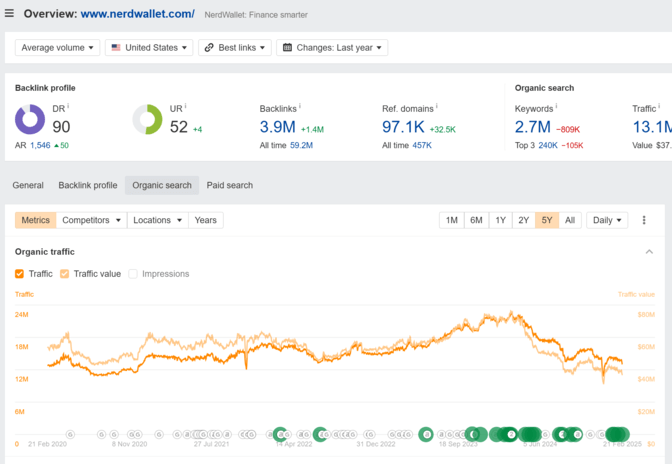
That’s why companies deciding to shift their strategy now are helping their organization:
- Get a first-to-market advantage over late adopters
- Grow the brand’s visibility across online channels, from social to search to AI
- Support business growth, like through leads or revenue generated
Is answer engine optimization worth it?
Yes!
Our SEO agency has managed hundreds of answer engine optimization campaigns and has seen this strategy perform for businesses across sectors — from business-to-consumer (B2C) to business-to-business (B2B).
A few case studies include:
| Industry | Results |
| SaaS | Citations in:
|
| Utilities | Citations in:
|
| Professional services | Citations in:
|
This demonstrates the value of visibility within answer engines, both organically and, potentially, through future advertising opportunities (like ChatGPT advertising).
That doesn’t mean answer engine optimization is easy.
Like search engine optimization, it has its challenges — in some ways, more than SEO.
What makes AEO challenging?
Answer engine optimization is challenging for a few reasons, including:
1. Tracking performance
Unlike search engine optimization, which has free and paid tools like Google Search Console, Ahrefs, and Semrush for tracking performance, answer engine optimization doesn’t have these resources.
At most, these platforms support AI Overviews tracking, but come with disclaimers:
| Platform | Disclaimer |
| Google Search Console | Combines AI Overview data with all other search data without filtering support |
| Ahrefs | Tracks AI Overview data, but as an SEO marketing platform, focuses on keywords vs. conversational questions |
| Semrush | Tracks AI Overview data, but like its competitor Ahrefs, focuses on SEO keywords vs. AEO questions |
One of the few platforms available for tracking mentions and citations across answer engines is OmniSEO™. This paid platform allows businesses to track their visibility — and their competitors’ — across AI chatbots, AI engines, and AI-powered experiences (like AI Overviews).
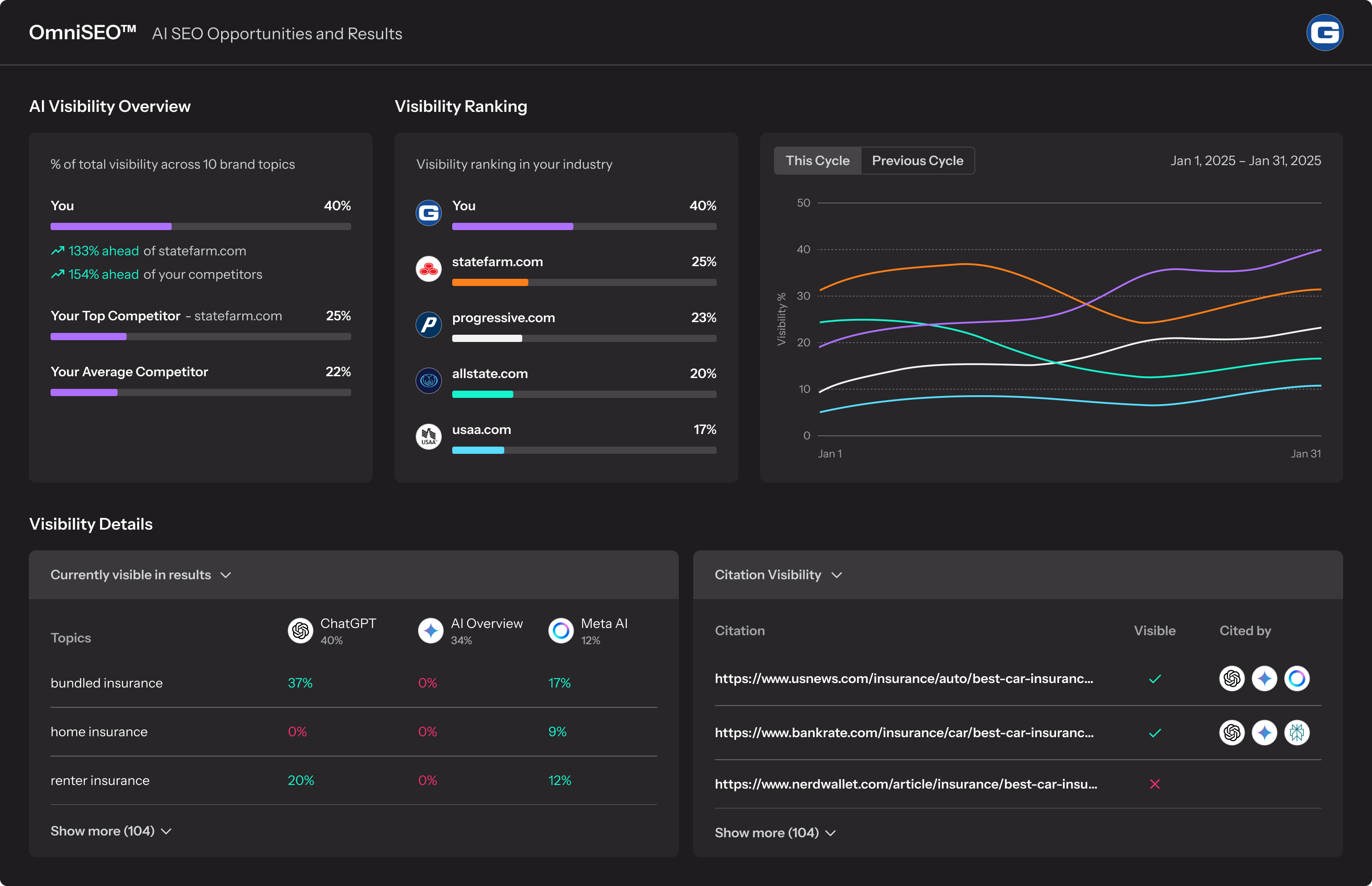
The free alternative is to search and log citations and mentions manually, like in the example below:
| Targeted question | Date | ChatGPT | Claude |
| what are some good restaurants in Iceland? | 2/2/2025 | Mentioned | Cited |
| what are some of the best restaurants in Reykjavík? | 2/2/2025 | None | None |
2. Getting internal support
Marketing teams can also struggle to get internal buy-in to practice answer engine optimization. Answer engine optimization isn’t a replacement for SEO, which means businesses need to invest more — or re-allocate funds — to support AEO efforts.
Solving this issue relies on good communication.
Plenty of data supports the need for answer engine optimization, but it’s important to tell a story with this data. Yes, Gartner predicts organic search traffic will decline by 25% in 2026, but what does that mean for the business?
Well, what percent of revenue comes from organic traffic? If the business wants to maintain its performance — and grow — how will it make up that lost revenue? Is the organization present now on different channels, like YouTube, LinkedIn, and third-party sites?
AI-powered engines, from Meta’s AI assistant to Anthropic’s Claude platform, provide a new outlet for reaching, engaging, and nurturing users. Like companies that aren’t on the first page of search results, companies that aren’t mentioned by answer engines risk remaining undiscovered.
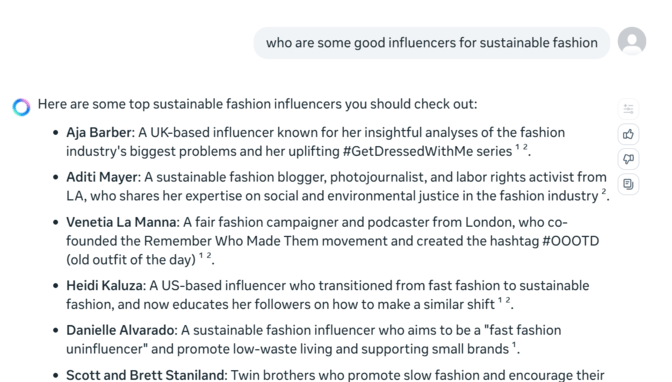
3. Optimizing for answer engines
Most search engine optimization campaigns focus on a single search engine: Google. That’s not the case with answer engine optimization, which focuses on improving visibility across several engines (and their various models) like:
- ChatGPT
- Claude
- Gemini
- Perplexity AI
- Meta AI
- Microsoft Copilot
While there are similarities in how these engines generate and return results, each is unique — and serves an important role in reaching users. ChatGPT and Microsoft Copilot, for example, are more similar than ChatGPT and Gemini since ChatGPT powers Microsoft Copilot.
Besides managing (and tracking) visibility across engines, SEOs also have to advance their skills.
As an example, Google has emphasized content helpfulness for years, challenging content creators to produce authoritative content that brings unique value to the search space. Answer engines ask creators — and SEOs — to go further.
You’ll learn more in our walkthrough on how to do AEO below, but these engines prioritize specificity. That means generic guidance that anyone could give, like “Write a compelling title tag,” won’t cut it anymore.
How does answer engine optimization work?
How answer engine optimization works starts with how answer engines work.
Developing these AI-powered engines started with training them on various data sets (you can think of this as a search engine’s index). OpenAI, for example, used publicly available Internet data and private information from third-party partners to train its ChatGPT models.
25% of the highest-quality sites in ChatGPT’s dataset have excluded themselves from future training, emphasizing the need (and opportunity) for businesses to produce original and authoritative content for their industry.
As a part of their training, these models “predict the next most likely word that might appear in response to a user request, and each subsequent word after that.” As OpenAI explains, for the sentence “instead of turning left, she turned ___,” the AI might suggest “right,” “back,” or “around.”
So, what does that mean for an SEO?
Just like contributing to a search engine’s index, SEOs need to contribute to an AI model’s dataset. So, when someone asks ChatGPT, “what are some good restaurants in Iceland?” your brand is the next most likely word.
There are multiple avenues for contributing to an AI model’s dataset, including:
| Contribution | Data provided |
| Local listing |
|
| Third-party sites |
|
| Your website |
|
You’ll learn more about how to optimize these contributions in our walkthrough on how to do AEO.
How long does answer engine optimization take?
Answer engine optimization can take a few weeks to a few months to deliver results. Its performance depends on a website’s existing SEO, and from our experience, our AEO services help clients see those results faster by building on established best practices.
That’s because these sites have started the process of:
- Being discoverable to search and answer engine crawlers
- Producing relevant content for common topics within their industry
- Building an authoritative and relative backlink profile
- Claiming local listings and social media profiles
If search engine optimization is a new investment for your organization, consider focusing your resources there. Then, after mastering the basics, invest some resources into answer engine optimization.
How to get started with answer engine optimization
Learn how to get started with answer engine optimization now:
1. Set goals and KPIs
You’ve got the green light to optimize for answer engines, which means determining:
- What goals will define your success
- Which metrics will measure your performance
Since answer engine optimization is a newer strategy with limitations (like reporting), we recommend setting modest goals, like earning 1-2 mentions for a related set of questions, and accessible metrics, like citations, mentions, and referral traffic.
Consider setting goals with a three-month or quarterly timeline. This timeline should provide some initial insights, like the amount of referral traffic from answer engines, and potentially bolster support for AEO efforts.
2. Develop a strategy
Next, build an initial strategy, starting with some research steps like:
- Auditing the site’s existing SEO
- Researching the conversational questions to target
- Understanding the target market’s preferences for different engines, like Meta AI vs. Claude
- Analyzing competitor visibility (the OmniSEO platform can do this automatically)
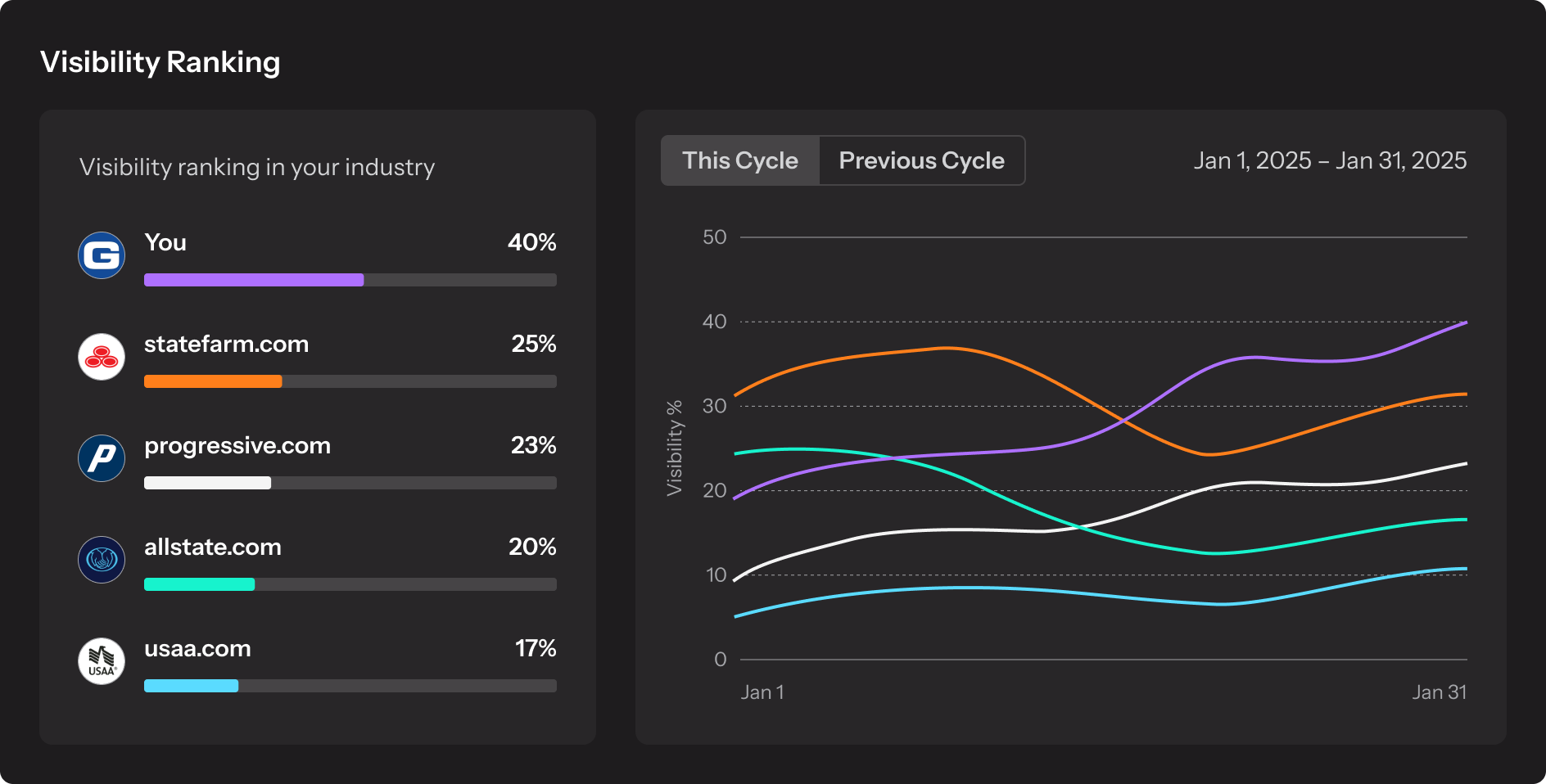
Using this data, outline where to focus the team’s (or your) time and resources.
For example, is focusing on Meta AI visibility more important because of your target audience? Or, is repairing some SEO issues the biggest priority before starting AEO optimizations? And which optimizations warrant the most attention and time? (More on that next).
P.S. Before starting, set up AEO tracking on your website analytics platform, like GA4!
For GA4 users, this means creating a Custom Channel Group where there is a channel for:
- Referral Traffic
- Answer Engine Traffic
You can extract answer engine traffic from existing referral traffic using some regex (ask ChatGPT or another AI platform for help!). Just remember that the regex will need updating if / when new AI platforms come online, like DeepSeek.
3. Optimize on-site
The most effective on-site optimizations for AEO include:
| Area | Optimization |
| Discoverability |
|
| Content |
|
4. Optimize off-site
The most effective off-site optimizations for AEO include:
| Area | Optimization |
| Backlink profile |
|
| Local listings |
|
| Social media |
|
| Review management |
|
5. Evaluate performance
In most cases, businesses track AEO performance with the following steps:
- Search the conversational phrase in an answer engine
- Log whether the business is cited or mentioned
- Repeat the process in other answer engines
This process takes time, but there are alternatives.
The OmniSEO platform, for example, can complete the above steps for businesses, along with tracking competitor visibility for those same search phrases, which is a tremendous time saver for teams.
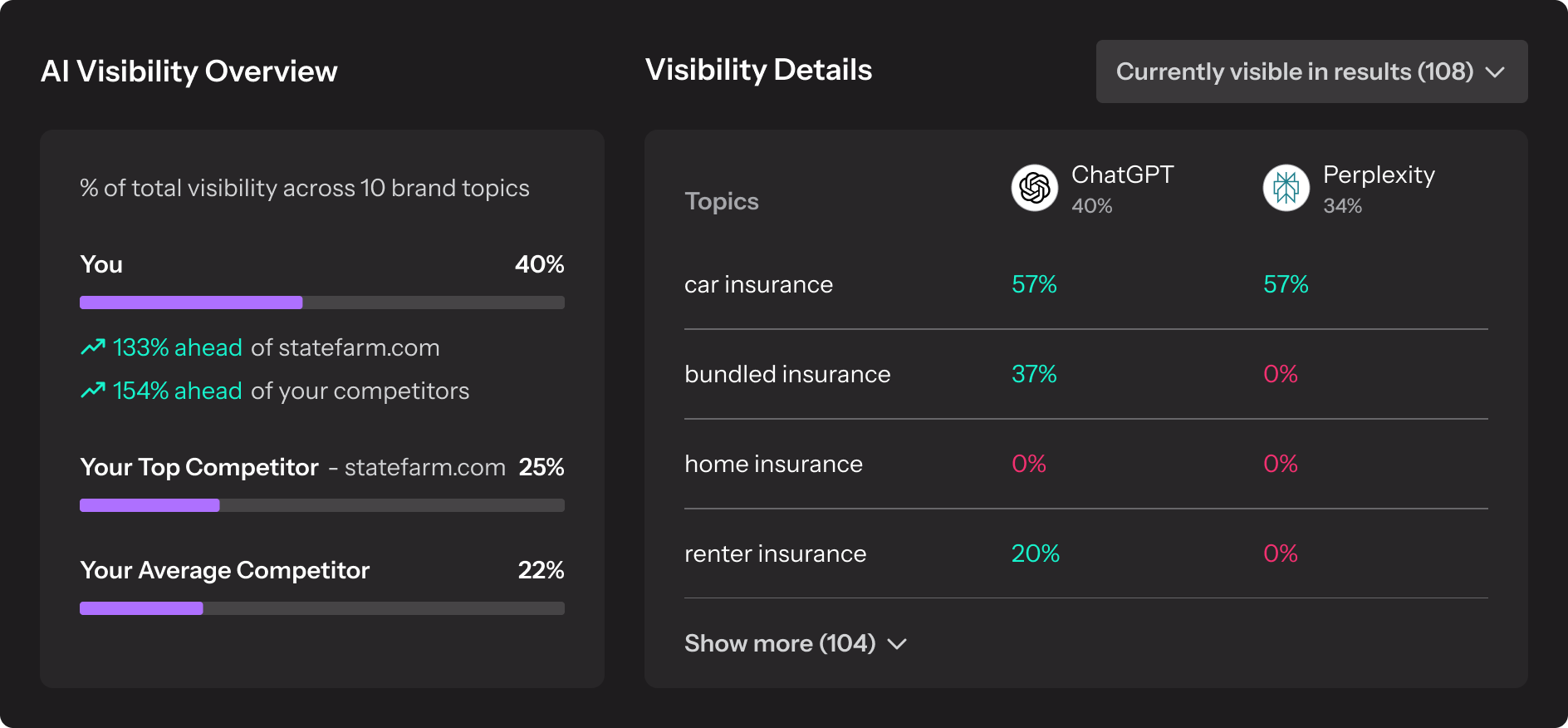
Either way, budget time for documenting and evaluating performance.
If results haven’t shifted after making optimizations, do some competitor analysis to determine what makes answer engines more likely to cite these competitors. Do these businesses, for example, have more unique content or authoritative mentions?
Consider taking similar steps when earning citations or mentions. What optimizations did the team complete? How does the content (if cited) compare to the other citations, and what could be done to improve our content?
This proactive approach will help your organization stay ahead of the competition.
Learn more: How to Rank on Answer Engines
Get discovered in answer engines with AEO & SEO
Congrats! You’ve learned the basics of answer engine optimization — and its correlation with ongoing SEO. Now, start growing your brand’s presence in ChatGPT, Microsoft Copilot, Perplexity AI, and more.
If needing some professional help (or our AEO tracking solution), contact us online today!

Future-Proof Your SEO Strategy with OmniSEO™
Goodbye search engine optimization, hello search everywhere optimization.

Table of Contents
- What is Answer Engine Optimization?
- What is the Difference Between AEO and SEO?
- Why is Answer Engine Optimization Important?
- Is Answer Engine Optimization Worth It?
- What Makes AEO Challenging?
- How Does Answer Engine Optimization Work?
- How Long Does Answer Engine Optimization Take?
- How to Get Started with Answer Engine Optimization
- Get Discovered in Answer Engines with AEO & SEO

Future-Proof Your SEO Strategy with OmniSEO™
Goodbye search engine optimization, hello search everywhere optimization.
Writers

Related Resources
- Meet SEO’s New Era: Search Everywhere Optimization
- Meta AI for Business: Understanding Meta Business AI Tools
- OmniSEO™ – Rank Everywhere
- Perplexity and AI SEO: How to Rank in Perplexity Answers
- What is Generative Engine Optimization (GEO)?
- What is Omnichannel SEO?
- Will AI Replace Google? The Future of AI and Google Search
- Will AI Replace SEO As We Know It?
- 50+ AI Marketing Statistics in 2025: AI Marketing Trends & Insights
- AEO vs. SEO: Key Differences and Importance in Digital Marketing

